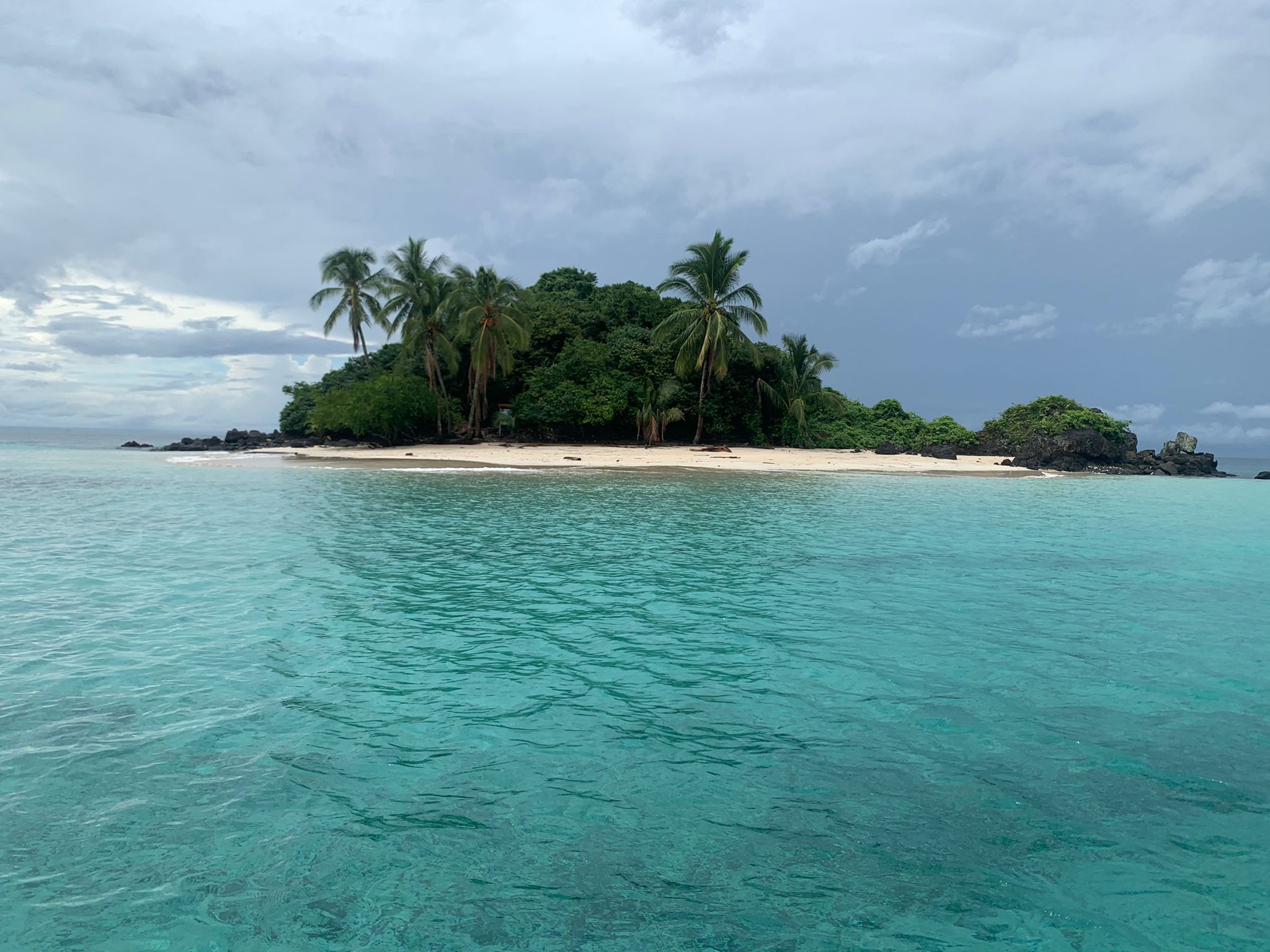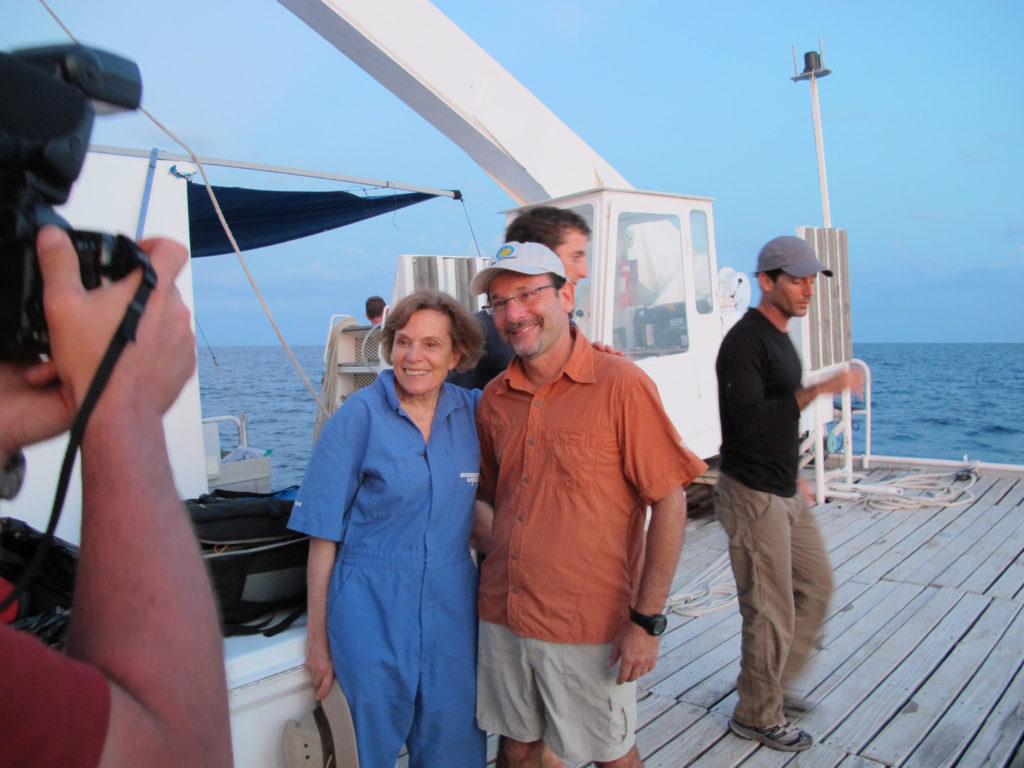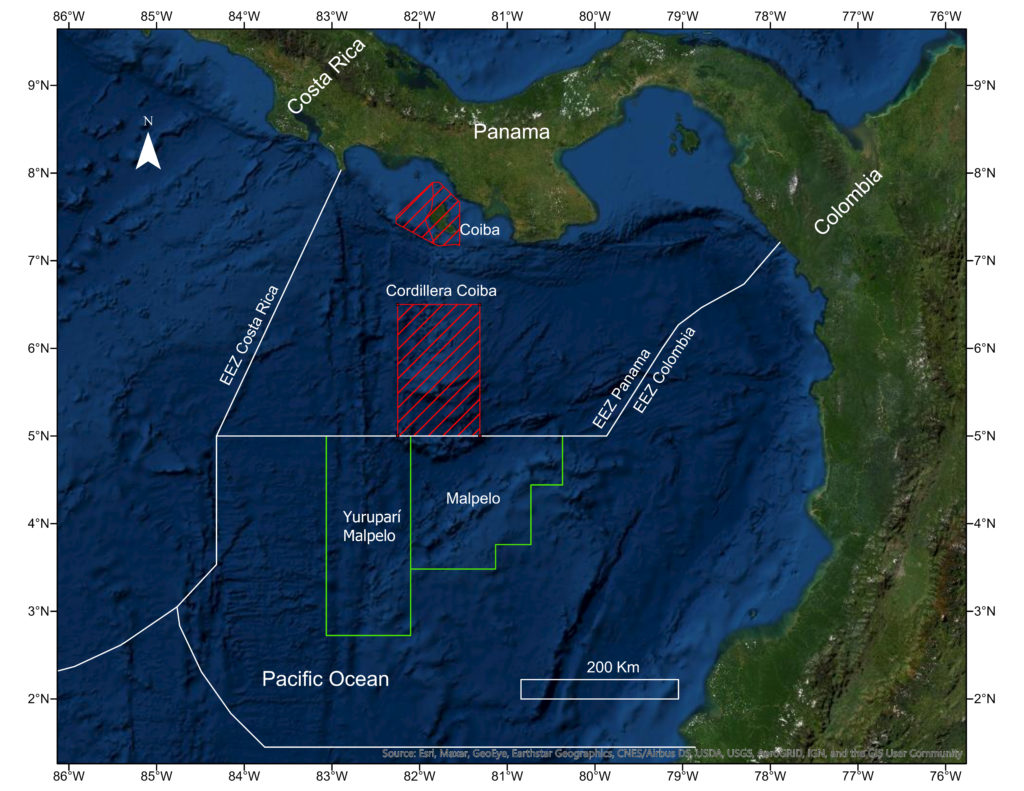Panama Achieves 30×30 Ocean Protection Goals in Newly Expanded Cordillera de Coiba Marine Protected Area
June 8, 2021
Header image by Max Bello.
Spanish translation can be read at the bottom of the page.
PANAMA CITY, PANAMA (June 8th, 2021) –
On June 8th, 2021, Laurentino Cortizo, President of Panama and Milciades Concepción, Minister of Environment signed the decree that protects the Coiba Ridge, a move that will triple the Cordillera de Coiba marine protected area. With this act, Panama is set to be ahead of the 30% by 2030 goals (30×30) and become a true Blue Leader – a country that officially “highly and fully” protects 30% or more of its oceans. Panama will finalize the management plan to address the regulation of the new expanded MPA by the fall.
Dr. Sylvia Earle, Founder of Mission Blue, says, “Congratulations to President Laurentino Cortizo and the country of Panama for protecting this special part of the blue planet. I hope this inspiring commitment gives courage to neighboring countries in the region including Costa Rica, Colombia and Ecuador to take similar actions to protect the incredible biodiversity in their waters, to link up protections and create a corridor where wildlife can thrive.” She continues, “I am pleased to announce that Mission Blue is welcoming a new Champion for this Hope Spot, Hector Guzman, who has been working with the government and Panamanian communities to define the protected area of nearly 68,000 km2 and help ensure the smooth implementation of the marine protected area. This is a true example of science diplomacy”.
Hector Guzman is the Senior Staff Scientist at the Smithsonian Tropical Research Institute and also part of the MigraMar collective and now the new Hope Spot Champion of the Coiba and Cordillera de Coiba Hope Spot. Guzman’s extensive research has been essential for developing fishing regulations, creating new marine protected reserves and supporting the respective management plans and for the conservation and protection of transboundary migratory marine species.
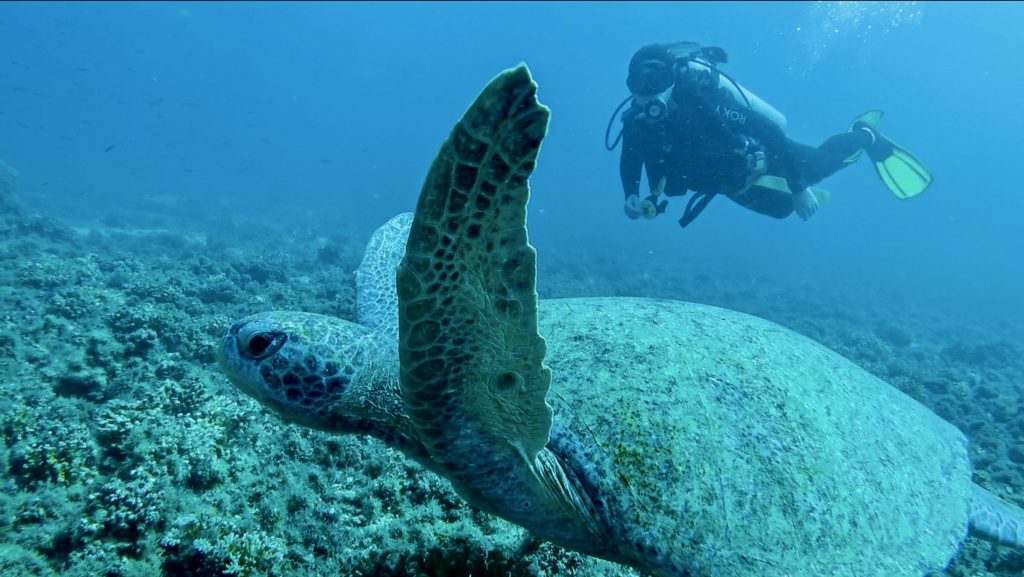
“I’ve been able to translate the science to inform fishing regulations, protection of endangered migratory species, and research-backed marine protected areas. When I see an opportunity on my side to inform policy, I engage”, he explains.
Guzman describes the significance of the decision. “The Cordillera de Coiba created with Colombia the first binational marine protected area in the Eastern Tropical Pacific in 2017, an unnoticed international event. This new expansion involved an orchestrated team effort, and closed the gap with Colombia’s Malpelo and Yurupari borders creating a new binational area of more than 121,500 km2.”
The Coiba and Cordillera de Coiba Hope Spot encompasses two marine protected areas (MPAs): Coiba National Park (CNP) and Cordillera de Coiba (CC) Sustainable Use. Coiba National Park is a UNESCO World Heritage Site and protects 3,770.64 km2 of coastal highly diverse habitats. Cordillera de Coiba is currently the largest MPA in the country and protects 17,223.52 km2 of oceanic deep habitats made up of several seamounts – underwater mountains that harbor important biodiversity.
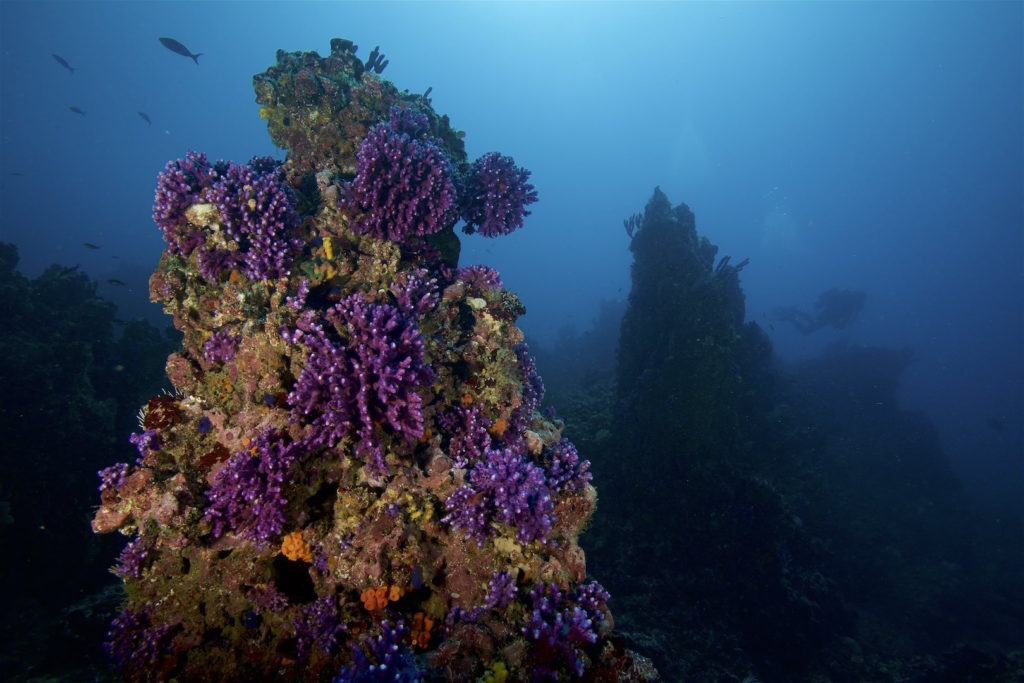
Milciades Concepción, Minister of Environment of Panama, says, “The expansion of the marine protected area of Coiba demonstrates the clear and strong commitment of Panama to ocean conservation, and at the same time, reinforces the role of the country in the fight against climate change.”
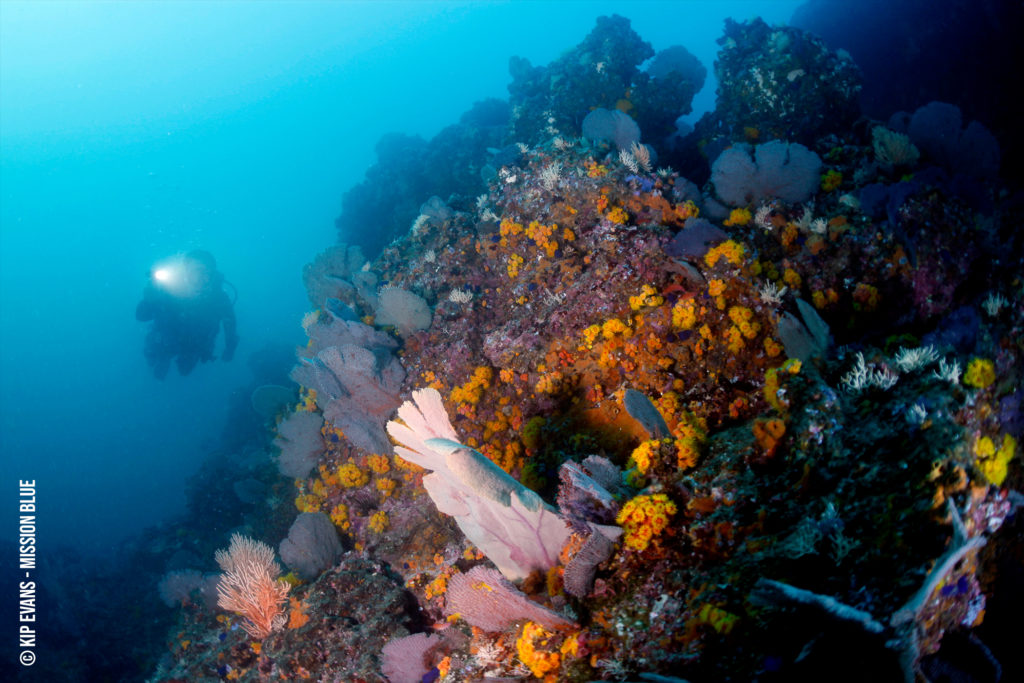
Of the newly expanded MPA, 2/3rds are designated as no-take, while the remaining ⅓ is planned for sustainable use, with no industrial fishing allowed. Perhaps the most important aspect of the expanded MPA is its new border with the Malpelo Fauna and Flora Sanctuary, the large marine protected area 500 km off of Colombia’s coast, and the Yurupari-Malpelo area.

Currently, Chile and Panama are the leading countries in the Eastern Tropical Pacific, both acting as Blue Leaders, honored for their dedication to thoroughly protecting their marine territories. The Blue Leaders is a group of countries lead by Belgium and are focused on two priority goals; to call for a new global ocean protection target under the Convention on Biological Diversity to protect at least 30% of the ocean through a network of highly and fully protected MPAs, and to ensure the conclusion of a robust new United Nations treaty for the high seas which will provide a legal mechanism to establish and manage fully and highly protected areas beyond national jurisdiction and modernize and strengthen assessment and management of human activities outside these protected areas.
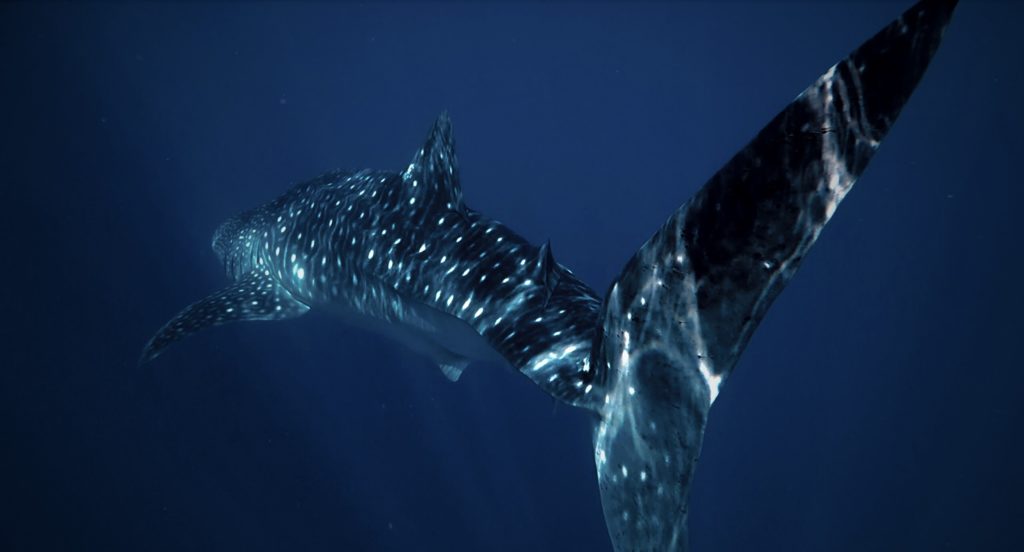
Surrounding countries including Ecuador and Costa Rica have committed to protecting some of their oceans, with Ecuador having protected 13% of its waters, and Costa Rica protecting just 2.7% of its waters (mpatlas.org). They still have a long way to go in order to protect the corridors and swimways of vulnerable animals like sharks, large whales, sea turtles and other species that migrate through the Eastern Pacific Ocean.
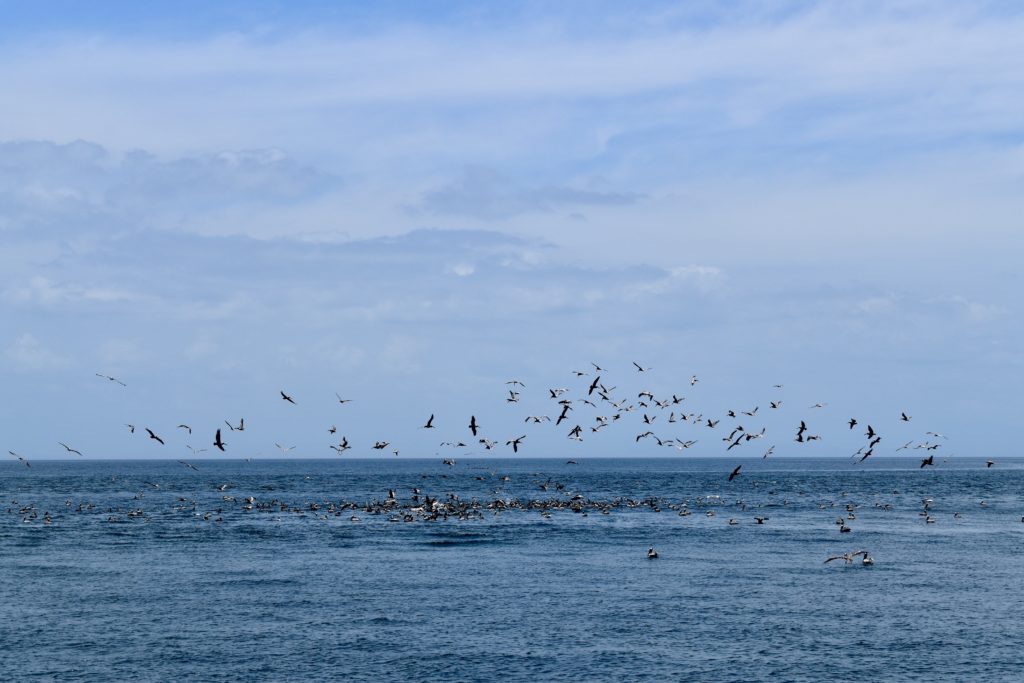
“We sincerely congratulate the country of Panama in declaring the Coiba range marine protected area. We hope that all nations see this as an example of a path forward toward protecting one of our home planet’s most vital resources, our oceans. And we encourage all nations around the globe to follow Panama’s example in protecting 30% of their oceans by 2030″ says Alex Perry, General Manager and President of Latin America, Patagonia.
This region is a biodiversity hotspot and is home to endangered sea turtles, whales, sharks and countless species of seabirds. These highly migratory species travel the region from seamount to seamount and island to island and are highly dependent on its nutrient-dense waters for survival.
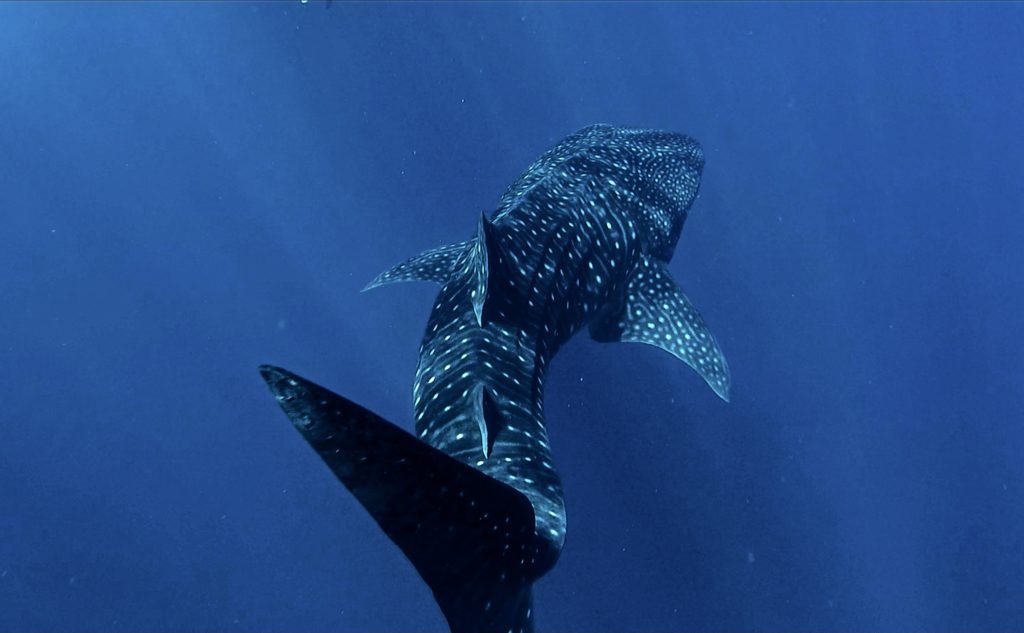
“We applaud Panama’s leadership and bold action expanding marine protections for Coiba Ridge – a key link to the Eastern Tropical Pacific for many migratory fish and mammals, last refuge for a number of threatened animals, and home to an exceptional array of creatures found nowhere else on earth. The Blue Nature Alliance and SkyLight are partnering with the Ministry of the Environment, MigraMar, and WildAid Marine, and committed to coordinate with Global Fishing Watch to support effective monitoring, management, and enforcement for the conserved waters,” says Joaquín Quinto Labougle, regional program officer for Latin America and the Caribbean for Blue Nature Alliance.
The level of protection and governance of the iconic Coiba National Park is at risk and under constant evaluation by UNESCO. Before the signing of the new marine protected area plan, Cordillera de Coiba was merely a “paper park”, meaning that it carried the title as a protected area, but was not under active and thorough protection. These marine protected areas are threatened by illegal fishing, including international purse-seine tuna vessels in the Cordillera de Coiba area and artisanal, industrial, and sport fishing in the Coiba National Park. Overall, fishing and uncontrolled tourism continue to be the major threats to these areas. The lack of protection is affecting the restoration of natural coastal habitats and species nurseries. Consequently, a coordinated international effort and leadership are necessary to move forward a reliable protection plan to allow depleted fish populations to recover to healthy levels.
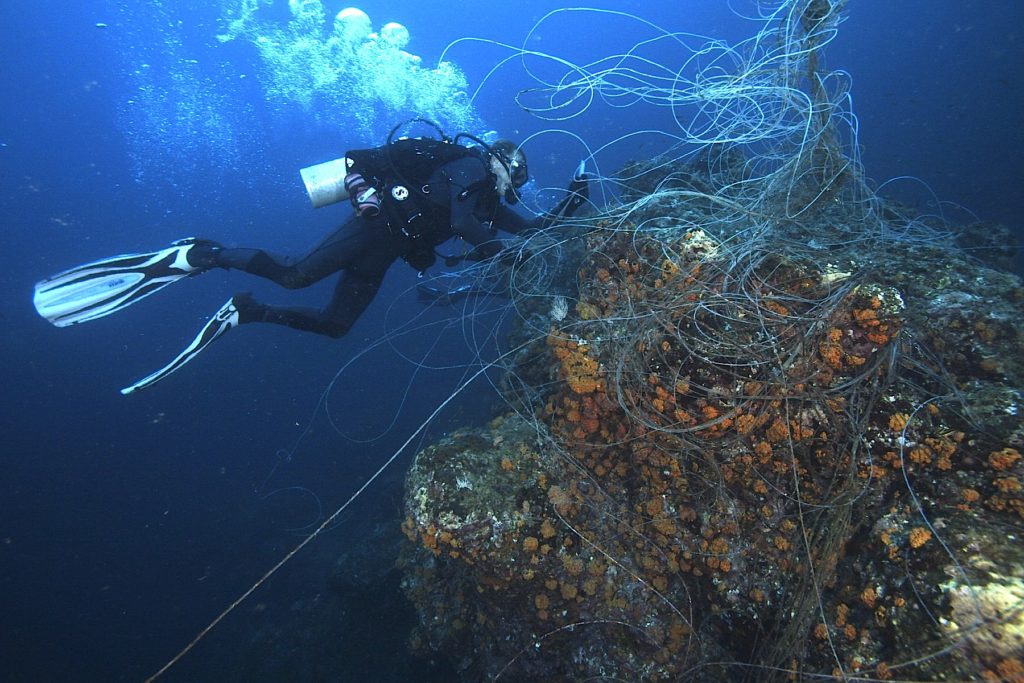
Hector Guzman is looking to the future and is working to achieve continued improvements to Panama’s approach to marine protection, as well as surrounding countries in the Eastern Tropical Pacific. He hopes that the expansion of the Cordillera de Coiba Sustainable Use marine protected area achieves biological and geological connectivity and results in a net spillover increase to influence the Coiba National Park and other coastal areas at a representative scale for conservation and management. He also seeks to increase the total binational protected area from 70,822.41 km2 to 121,507.87 km2, the third-largest MPA in the Eastern Tropical Pacific after Revillagigedo and Galapagos and to use scientific data to continue informing policies and promoting improved governance, management, and tangible protection at both Coiba National Park and Cordillera de Coiba marine protected areas.
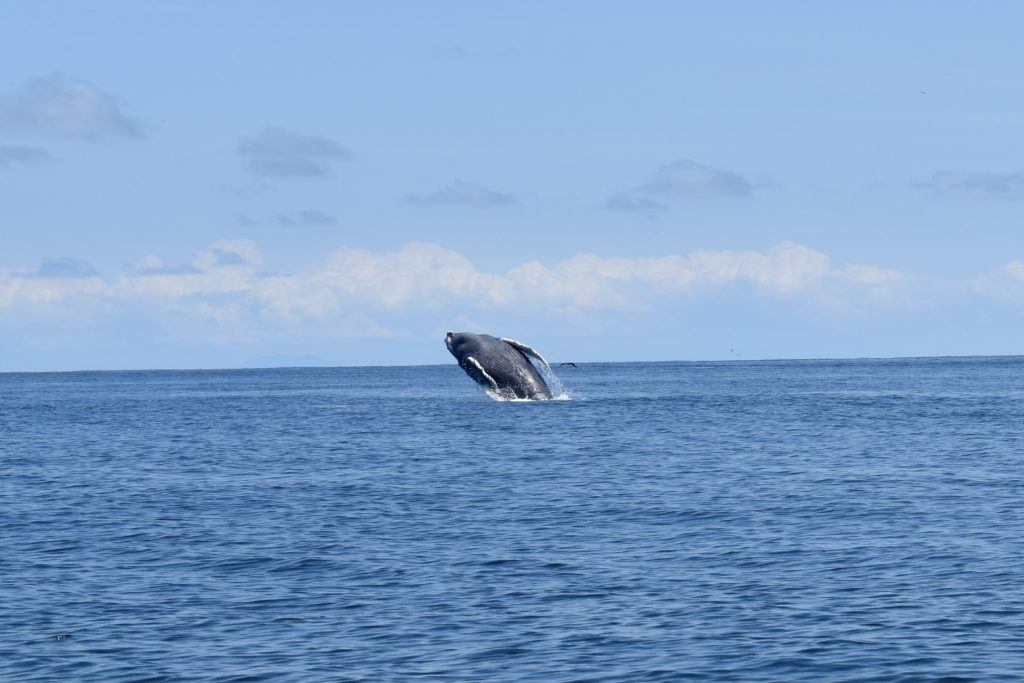
Molly McUsic, President of Wyss Foundation says, “By expanding the Cordillera de Coiba Marine Protected Area, the government of Panama is not just taking bold action to safeguard the region’s exceptional wildlife and biodiversity, but also strengthening Panama’s robust ocean-based economy, and establishing itself as a global ocean conservation leader. Thank you and congratulations to President Cortizo, Minister Concepción, and the people of Panama for permanently protecting this remarkable place and charting the course to 30% for other countries to follow.”
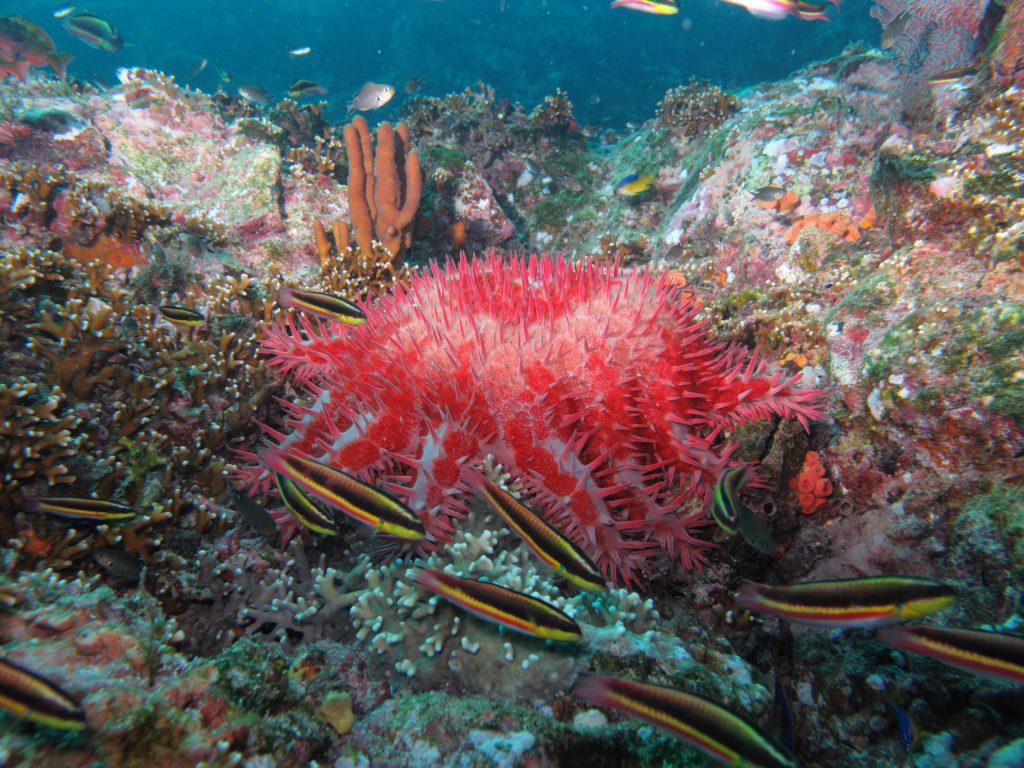
Guzman says, “Thanks to the government of Panama, particularly the Minister of Environment, the well-coordinated experts’ team, and the Wyss Foundation and Migramar for supporting this initiative, the country has reached the 30×30 with nearly 98,000 km2 of marine protection, and now it is the time for big management and conservation. The country, however, needs additional financial resources.”
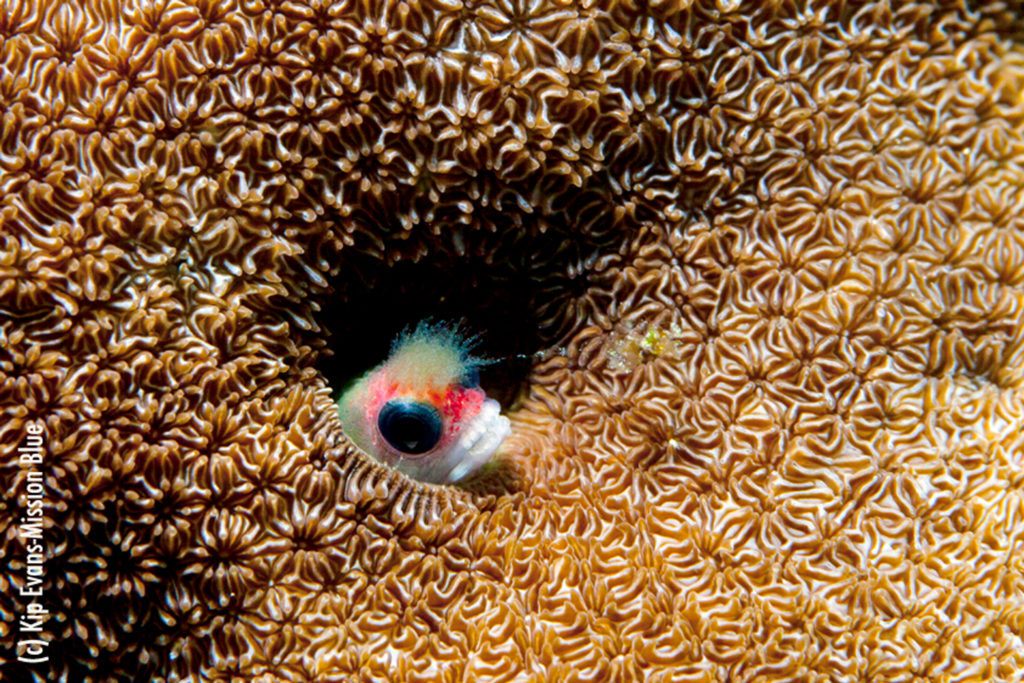
About Smithsonian Tropical Research Institute
The Smithsonian Tropical Research Institute was founded with the purpose of increasing and sharing knowledge about the past, present and future of tropical ecosystems and their relevance to human welfare. This work began in Panama in 1910 when the Smithsonian led one of the world’s first major environmental impact studies, which surveyed and cataloged the flora and fauna of the lowland tropical forests that would be flooded with the creation of the Panama Canal. A century later, the Smithsonian in Panama is a standard-setting global platform for groundbreaking research on tropical forests and marine ecosystems and their astounding biodiversity.
Click here to dive into the interactive StoryMap, hosted by Esri.
Panamá Alcanza la Meta 30×30 de Protección de los Océanos con la Reciente Expansión de la Cordillera de Coiba Área Marina Protegida
CIUDAD DE PANAMÁ, PANAMÁ (8 de Junio, 2021) –
El 8 de Junio, 2021, Laurentino Cortizo, Presidente de Panamá y Milciades Concepción, Ministro del medio ambiente firmaron el tratado que protege la Cordillera de Coiba. Acción que triplicará el área marina protegida (AMP) de la Cordillera de Coiba. Este tratado colóca a Panamá en la delantera para la meta del 30% de protección para el 2030 (30×30) convirtiéndolos en verdaderos líderes azules – un país que oficialmente protege “altamente y por completo” el 30% o más de sus océanos. Panamá finalizará el plan de manejo que implementará para regular la nueva expansión del AMP para el otoño.
La Dra. Sylvia Earle, Fundadora de Mission Blue, dice, “Felicitaciones para el Presidente Laurentino Cortizo y el País de Panamá por proteger ésta área tan especial del planeta azul. Espero que éste inspirador compromiso provea de valentía a países vecinos en la región incluyendo a Costa Rica, Colombia y Ecuador para tomar la decisión de proteger la increíble biodiversidad que se encuentra en sus aguas, y vincular áreas de protección que formen corredores donde la vida marina pueda prosperar.” Continuó diciendo, “Tengo el honor de anunciar que Mission Blue le da la bienvenida al nuevo Campeón para este Hope Spot (Área de Esperanza), Hector Guzman, quien ha trabajado con el gobierno y las comunidades Panameñas para delimitar el área protegida de casi 68,000 km2 y ayudar a implementar de manera segura el área marina protegida. Lo que demuestra un verdadero ejemplo de diplomacia científica.”
Hector Guzman es un científico que trabaja en el Instituto Smithsoniano de Investigación Tropical, además forma parte del colectivo de MigraMar y es ahora el nuevo Campeón para el Hope Spot (Área de Esperanza) de Coiba y la Cordillera de Coiba. La investigación científica extensiva realizada por Guzman ha sido esencial para el desarrollo de regulaciónes pesqueras, creando nuevas áreas marinas protegidas y apoyando sus respectivos planes de manejo, así como para la conservación y protección de especies marinas con migraciones transfronterizas.
“He logrado traducir la ciencia para informar a las políticas y regulaciones pesqueras, la protección de especies migratorias en peligro de extinción, y fundamentar con investigación áreas marinas protegidas. Cuando veo una oportunidad para informar las regulaciones, me comprometo”, explica Guzman.
Guzman describe la importancia de ésta decisión. “La Cordillera de Coiba fue creada junto con Colombia, siendo en la primera área marina protegida binacional en el Pacífico Oriental Tropical en 2017, un evento internacional que pasó inadvertido. Esta nueva expansión involucró un esfuerzo orquestrado en equipo que eliminó la brecha sin protección entre la isla colombiana de Malpelo y el límite fronterizo de Yurupari creando una nueva área binacional de más de 121,500 km2.”
El Hope Spot (Área de Esperanza) de Coiba y la Cordillera de Coiba incluye dos áreas marinas protegidas (AMPs): El Parque Nacional de Coiba (PNC) y la Cordillera de Coiba (CC) uso sustentable.
El Parque Nacional de Coiba es un Patrimonio Mundial de la UNESCO que protege 3,770.64 km2 de habitats costeros de alta diversidad. La Cordillera de Coiba es actualmente el AMP más grande del país y protege 17,223.52 km2 de habitats de océano profundo que constituyen multiples montes submarinos – montañas sumergidas bajo el agua que sostienen una importante biodiversidad.
Milciades Concepción, Ministro del medio ambiente de Panamá, dice, “La expansión del área marina protegida de Coiba demuestra el claro y fuerte compromiso de Panamá con la conservación marina, y al mismo tiempo, refuerza el rol del país para combatir el cambio climático.”
Dos terceras partes de la nueva expansión del AMP fueron designadas como zonas de no pesca , mientras que el tercio restante será designado para uso sustentable, que no permite la pesca industrial. Probablemente el aspecto más importante de la expansión del AMP es la nueva frontera con el Santuario de Flora y Fauna de Malpelo, una grande área marina protegida localizada a 500 km de la costa de Colombia, y el área de Yurupari-Malpelo.
Actualmente, Chile y Panamá son los países líderes en el Pacífico Oriental Tropical, ambos actuando como líderes azules, reconocidos por su dedicación para proteger de manera diligente sus territorios marinos. Los líderes azules, son un grupo de países liderados por Bélgica que se enfoncan en dos metas principales; hacer un llamado para un nuevo objetivo global para la protección de los océanos bajo la Convención de Diversidad Biológica para proteger al menos el 30% de los océanos a través de una red AMPs de alta y total protección, y asegurar la finalización de un nuevo tratado de las Naciones Unidas para el mar abierto, el cual proveera un mecanismo legal para establecer el manejo total y áreas de alta protección más allá de la jurisdicción nacional y modernizar y reforzar la evaluación y el manejo de las actividades humanas fuera de éstas áreas protegidas.
Países cercanos incluyendo Ecuador y Costa Rica se han comprometido a proteger parte de sus océanos, con Ecuador protegiendo 13% de sus aguas, y Costa Rica protegiendo tan solo el 2.7% de sus aguas (mpatlas.org) aun tienen un gran camino por recorrer para proteger sus corridores y vías migratorias de especies vulnerables como tiburones, ballenas, tortugas marinas y otras especies que migran a través del Pacífico Oriental Tropical.
Alex Perry, Gerente general y presidente para America Latina, Patagonia dice, “Queremos felicitar sinceramente a Panama por la declaración de la nueva área marina protegida de cordillera de Coiba. Esperamos que todas las naciones del mundo vean esto como un ejemplo, un camino futuro para proteger el planeta y uno de los elementos más importantes del mismo, nuestro océano, y queremos hacer un llamado a todos los estados en el mundo, a seguir el ejemplo de Panama en proteger el 30% de los océanos, incluso antes del 2030.”
Ésta región es un área de alta biodiversidad que alberga especies en peligro de extinción como tortugas marinas, ballenas, tiburones e incontables especies de aves marinas.
“Aplaudimos el liderazgo de Panamá y su audaz acción de expandir las protecciones marinas en la Cordillera de Coiba, punto de conexión clave del Pacífico Este Tropical para muchos peces y mamíferos migratorios, último refugio para varios animales amenazados y hogar de una variedad excepcional de especies que no se encuentran en ningún otro lugar de la tierra. Blue Nature Alliance y SkyLight se están asociando con el Ministerio de Medio Ambiente, MigraMar y WildAid Marine, y se comprometen a trabajar en coordinación con Global Fishing Watch, para apoyar el monitoreo, la gestión y la implementación efectiva del área protegida.” – Joaquín Quinto Labougle, oficial regional de programas para América Latina y el Caribe de Blue Nature Alliance.
Éstas especies altamente migratorias navegan la región de monte submarinos a monte submarino y de isla a isla y dependen de estas aguas ricas en nutrientes para su supervivencia.
El nivel de protección y manejo del icónico Parque Nacional de Coiba se encuentra en riesgo y esta constantemente bajo evaluación por el UNESCO. Antes de la firma del plan de la nueva área marina protegida, la Cordillera de Coiba era simplemente un “parque en papel”, refiriendose a que únicamente constaba con el título de área protegida, pero no se encontraba bajo una activa y constante protección. Éstas áreas marinas protegidas estan amenazadas por la pesca ilegal, incluyendo la flota internacional cerquera de barcos atuneros dentro de la Cordillera de Coiba y pesca artesanal, industrial y deportiva en el Parque Nacional de Coiba. En general, la pesca y el turismo no regulado continuan siendo la principal amenaza para éstas áreas. La falta de protección está afectando la recuperación de hábitats naturales costeros y áreas de crianza para algunas especies. Por lo que, es necesario el liderazgo y un coordinado esfuerzo internacional que permita avanzar un confiable plan de protección que permita que las poblaciones sobrepescadas de peces se recuperen a niveles saludables.
Hector Guzman mira hacia el futuro y está trabajando para lograr continuamente mejorar el enfoque para la protección marina de Panamá y de otros países cercanos en el Pacífico Oriental Tropical. Esperando que la expansión de la Cordillera de Coiba área marina protegida y Uso Sustentable alcance conectividad biológica y geológica que resulte en una red de derrame que incremente el efecto del Parque Nacional de Coiba y otras áreas costeras a una escala representativa para el manejo y la conservación. También busca aumentar el total de la binacional área protegida de 70,822.41 km2 a 121,507.87 km2, la tercera AMP más extensa en el Pacífico Oriental Tropical después de Revillagigedo y Galápagos y utilizar data científica para continuar informando las regulaciones y promover un mejor manejo, y una protección tangible en ambas áreas marinas protegidas de el Parque Nacional de Coiba y la Cordillera de Coiba.
Molly McUsic, Presidente de la Fundación Wyss dice, “ Al expander el área marina protegida de la Cordillera de Coiba, el gobierno de Panamá no solo esta actuando a la vanguardia para proteger la vida silvestre y biodiversidad excepcional de la región, sino que también esta fortaleciendo la fuerte economía de Panamá que se basa en el océano, y estableciendose como un lider global en la conservación de los océanos. Un agradecimiento y felicitación para el Presidente Cortizo, y la Ministro Concepción, y a todos las personas de Panamá por permanentemente proteger este lugar tan especial y marcar el camino para alcanzar la meta del 30% para que otros países lo sigan.”
Guzman dice, “gracias al gobierno de Panamá, particularmente al ministro del medio ambiente, al bien organizado equipo de expertos, a la Fundación Wyss y a Migramar por apoyar esta iniciativa, el país alcanzó el 30×30 con casi 98,000 km2 de protección marina, y ahora es momento para un gran manejo y conservación. Sin embargo, el país necesita recursos financieron adicionales.”
Sobre Mission Blue
Liderada por la legendaria oceanógrafa Dra. Sylvia Earle, Mission Blue es una coalición global que busca unificar e inspirar una surgencia de conciencia publica, acceso y apoyo para una red global de áreas marinas protegidas – Hope Spots (Áreas de Esperanza).
Bajo el liderazgo de la Dra. Earle, el equipo de Mission blue lleva a cabo campañas de comunicación que llevan a los Hope Sports (Áreas de Esperanza) al escenario del mundo a través de documentales, redes sociales, medios de comunicación tradicionales y herramientas inovadoras como Google Earth. Mission Blue se embarca regularmente en expediciones océanicas que generan información sobre estos ecosistemas vitales y ayudan a promover su protección. Mission Blue también apoya el trabajo de conservación de ONGs alrededor del mundo que comparten la misión de conseguir apoyo del público para la protección de los océanos. La alianza de Mission Blue incluye más de 250 respetados grupos de conservación marina y organizaciones con una visión similar.
Sobre el Instituto Smithsoniano de Investigación Tropical
El Instituto Smithsoniano de Investigación Tropical fue fundado con el propósito de incrementar y difundir el conocimiento sobre el pasado, presente y futuro de los ecosistemas tropicales y su relevancia para el bienestar de la humanidad. Su labor comenzó en Panamá en 1910, cuando el Smithsoniano realizó uno de los primeros y principales estudios de impacto medioambiental a nivel global, en el cual se censaron y catalogaron la flora y fauna de los bosques bajos tropicales que serían inundados durante la construcción del canal de Panamá. Cien años después, el Smithsoniano en Panamá es una plataforma global estandarizada que realiza investigación revolucionaria en los bosques tropicales y ecosistemas marinos y su sobresaliente biodiversidad.

